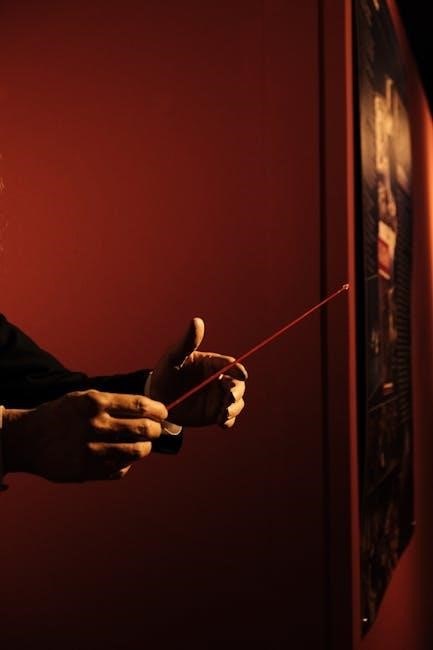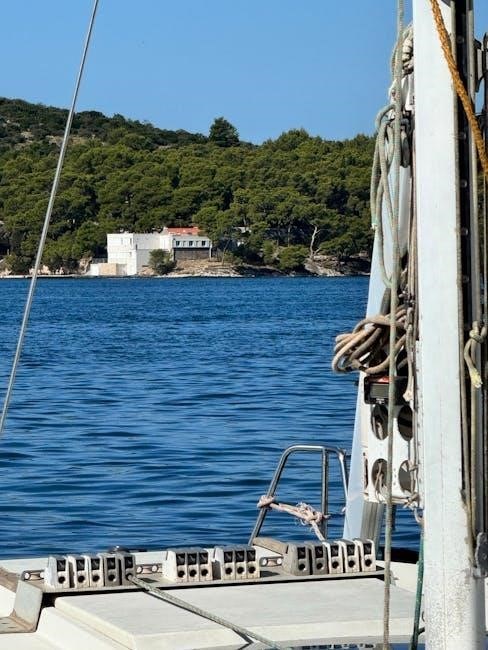A futon is a versatile furniture piece serving as both a bed and sofa. Proper assembly ensures functionality, safety, and longevity. Follow detailed instructions for a seamless setup.
1.1 What is a Futon?
A futon is a traditional Japanese bed system, now widely used globally, designed for versatility. It typically consists of a mattress and a frame, often convertible into a sofa. Futons are space-efficient, ideal for small apartments or guest rooms, offering both seating and sleeping solutions. Modern designs vary, with materials ranging from wood to metal, and mattresses available in cotton, foam, or hybrid styles. This adaptability makes futons a practical choice for modern living spaces.
1.2 Importance of Proper Assembly
Proper assembly of a futon is crucial for stability, safety, and functionality. Incorrect assembly can lead to structural issues, such as wobbling or collapsing, posing risks of injury. A well-assembled futon ensures even weight distribution, preventing damage to the frame and mattress. It also enhances comfort and extends the product’s lifespan. Following the manufacturer’s instructions closely guarantees a secure and durable setup, making the futon a reliable piece of furniture for years to come.
1.3 Overview of the Assembly Process
The assembly process involves systematically constructing the futon frame, attaching supports, and installing conversion mechanisms. Begin by unboxing and organizing all parts and tools. Follow the manual step-by-step to ensure accuracy. Start with the base frame, then add supports and mechanisms. Final adjustments ensure proper alignment and functionality. While manageable for DIY enthusiasts, patience and attention to detail are essential for a successful setup. Proper organization and preparation are key to a smooth assembly experience.
Preparing for Assembly
Organize tools, materials, and workspace. Ensure all components are accounted for and instructions are clear. A clean, flat surface and proper lighting enhance efficiency and safety.
2.1 Gathering Tools and Materials
Start by collecting all necessary tools and materials. Typically, you’ll need an Allen wrench, screwdriver, and possibly a rubber mallet. Ensure all bolts, screws, and hardware are included in the package. Check the instruction manual for a complete list of required tools. Organize the components to avoid losing small parts. Verify the inventory against the provided parts list to ensure nothing is missing. A well-prepared workspace with all items ready will streamline the assembly process and reduce frustration.
2.2 Understanding the Instruction Manual
Begin by thoroughly reviewing the instruction manual provided with your futon assembly kit. Familiarize yourself with the diagrams, step-by-step guides, and safety precautions. The manual is tailored to your specific model, ensuring accurate assembly. Pay attention to symbols, labels, and part references. Read through the entire manual before starting to avoid confusion. Use the diagrams to identify components and their proper placement. Follow the sequence of steps carefully to ensure a smooth assembly process. If unsure, refer back to the manual or seek clarification to prevent errors.
2.3 Setting Up the Workspace
Before starting assembly, clear a large, flat, and sturdy workspace. Cover the floor with a protective cloth to prevent damage. Unpack all components and organize them by type. Ensure good lighting and ventilation. Place tools and hardware within easy reach. Double-check that all parts are included and undamaged. Keep children and pets away for safety. Having a second person assist can simplify the process. A well-prepared workspace ensures efficiency and reduces the risk of errors during assembly.
Step-by-Step Assembly Guide
Follow detailed instructions to build your futon systematically. Start with the frame, align parts carefully, and use tools as specified for a sturdy and functional result.
3.1 Assembling the Frame
Begin by unpacking and identifying all frame components. Attach the legs to the base using the provided bolts. Next, connect the side rails to the base, ensuring proper alignment. Use the Allen wrench to tighten all bolts securely. Double-check the frame’s stability by gently rocking it. If any parts feel loose, tighten them immediately. Ensure all hinges and joints are properly aligned for smooth operation. A sturdy frame is the foundation of a functional futon, so take your time with this step.
3.2 Attaching the Mattress Support
Once the frame is assembled, locate the mattress support slats or platform. Align the slats with the pre-drilled holes on the frame. Secure them using the provided screws. Tighten evenly to avoid warping. Ensure the support is level and sturdy. If using a platform, attach it by aligning the brackets and tightening the bolts. Double-check all connections for stability. A properly attached mattress support ensures comfort and prevents sagging. Follow the manual for specific screw placements and torque requirements.
3.3 Installing the Conversion Mechanism
Attach the conversion mechanism by aligning the hinges with the frame. Secure the hinges using the provided bolts, ensuring they are tightly fastened. Next, install the conversion arms by inserting them into the designated slots. Tighten the screws firmly to hold the arms in place. Finally, test the mechanism by gently folding and unfolding the futon to ensure smooth operation. Refer to the manual for specific alignment and tightening instructions to guarantee stability and proper functionality.
3.4 Final Adjustments and Tightening
Once the conversion mechanism is installed, inspect all bolts and screws to ensure they are securely tightened. Adjust any misaligned parts and verify the mattress support is evenly positioned. Double-check the frame’s stability by gently rocking the futon. Tighten all joints firmly to prevent wobbling. Finally, test the futon’s conversion mechanism to ensure smooth transitions between sofa and bed modes. Proper tightening guarantees safety, durability, and optimal performance of your newly assembled futon.
Common Challenges and Solutions
Address missing parts by verifying the inventory. Solve alignment issues with shims or adjustments. Tighten or loosen joints as needed for stability and proper functionality.
4.1 Dealing with Missing or Damaged Parts
If parts are missing or damaged, stop assembly and contact the manufacturer. Check the inventory list carefully. Use replacement parts only, as substitutes may compromise stability. Patience and careful inspection ensure proper assembly and prevent further issues. Always follow the provided instructions for requesting replacements to avoid delays. This step is crucial for ensuring the futon’s safety and functionality. Proper handling of missing or damaged parts guarantees a successful assembly process.
4.2 Solving Alignment Issues
Alignment issues during assembly can be frustrating but are often easy to fix. Ensure all bolts and screws are loosely secured before tightening. If parts don’t align, check for incorrect placement or uneven surfaces. Use shims or adjust the frame slightly to achieve proper alignment. Verify instructions for correct positioning. Tighten all parts firmly once aligned. If issues persist, double-check the manual or contact support. Proper alignment is crucial for stability and functionality, so take time to address it carefully.
4.3 Addressing Tight or Loose Joints
Tight or loose joints can affect the futon’s stability. If joints feel too tight, ensure parts are aligned correctly and avoid forcing them. For loose joints, re-tighten bolts or screws gradually. Use a wrench or Allen key as specified. If joints remain loose, check for missing washers or shims. Apply a small amount of lubricant if parts stick. Tightening should be done evenly to prevent uneven stress. Always refer to the manual for torque specifications. Properly secured joints ensure the futon’s durability and safe use.
Safety Tips and Precautions
Always wear protective gloves and safety glasses. Ensure the workspace is clear to avoid tripping. Follow manual instructions carefully to prevent accidents. Use tools cautiously.
5.1 Avoiding Injury During Assembly
Wear protective gloves and safety glasses to prevent injuries. Clear the workspace to avoid tripping hazards; Use tools correctly and follow instructions to minimize accidents. Lift heavy parts carefully, bending at the knees. Ensure all bolts and screws are securely tightened to prevent instability. Avoid overreaching or stretching, as this can lead to strains. Keep children and pets away from the assembly area. If unsure about any step, consider seeking assistance or consulting additional resources.
5.2 Ensuring Stability and Balance
Place the futon on a level surface to ensure even weight distribution. Use all provided hardware to secure parts tightly. Double-check alignment of frames and supports. Tighten bolts firmly but avoid over-tightening, which can damage components. Test the futon’s stability by gently rocking it. Ensure the conversion mechanism operates smoothly without wobbling. If instability occurs, re-examine connections and tighten as needed. A balanced futon ensures safety and prevents structural damage, providing reliable performance for years to come.
5.3 Preventing Damage to the Futon
Handle all parts with care to avoid scratches or dents. Use the correct tools to prevent stripping screws. Avoid over-tightening, as it may damage the frame. Place the futon on a level surface to ensure even weight distribution. Use a mattress protector to shield against spills and stains. Regularly inspect for wear and tear, addressing issues promptly. Store the futon in a dry, cool environment when not in use. Proper care extends the lifespan and maintains the futon’s quality and functionality.
Maintenance and Upkeep
Regular cleaning, lubricating moving parts, and checking for wear ensure your futon remains functional and comfortable. Address issues promptly to maintain its durability and aesthetic appeal.
6.1 Cleaning the Futon
Regular cleaning is essential for maintaining your futon’s hygiene and appearance. Start by vacuuming to remove dust and debris; For stains, use a mild detergent and a damp cloth, avoiding harsh chemicals. For deeper cleaning, check the care label for machine-washable covers. Allow the futon to air dry completely to prevent moisture buildup. Avoid soaking the mattress, as it may damage the materials. Regular maintenance ensures a clean, comfortable, and long-lasting futon.
6.2 Lubricating Moving Parts
Lubricating the moving parts of your futon is crucial for smooth operation and durability. Focus on hinges, joints, and the conversion mechanism. Use a silicone-based spray or grease to reduce friction and prevent squeaking. Avoid using oil or water-based products, as they may attract dust or damage materials. Reapply lubricant every 6-12 months or when you notice stiffness. Proper lubrication ensures the futon functions effortlessly and maintains its longevity. Regular maintenance will keep your futon in optimal condition for years to come.
6.3 Checking for Wear and Tear
Regularly inspect your futon for signs of wear and tear, such as frayed fabric, loose joints, or damaged frames. Tighten any loose screws or bolts immediately to prevent further damage. Replace worn-out parts, like hinges or support slats, to ensure stability. Clean the surface regularly to avoid dirt buildup, which can cause premature wear. Addressing these issues promptly will extend the lifespan of your futon and maintain its comfort and functionality over time.
Troubleshooting Common Issues
Identify and address issues like misaligned parts or loose joints by checking connections and consulting the manual. Tighten screws and ensure proper alignment for stability and functionality.
7.1 Fixing a Squeaky Frame
A squeaky futon frame can be resolved by identifying the source of the noise. Tighten all bolts and screws, as loose joints are common culprits. Apply silicone-based spray lubricant to moving parts and hinges. If squeaking persists, check for misaligned components and adjust them according to the manual. Ensure all parts are properly fitted and secured. Regular maintenance, such as lubricating joints, can prevent future squeaks and extend the lifespan of your futon.
7.2 Repairing a Broken Mechanism
If the conversion mechanism breaks, inspect for damaged or misaligned parts. Replace any broken components using a replacement kit or spare parts. Ensure all hinges and joints are properly aligned and securely fastened. Lubricate moving parts to restore smooth operation. If the issue persists, consult the manual or contact the manufacturer for assistance. Regular maintenance and careful handling can prevent future breakdowns and ensure the futon functions correctly as both a bed and sofa.
7.3 Adjusting the Mattress Fit
Ensure the mattress fits snugly on the frame for optimal comfort and support. Check alignment by verifying the mattress edges align with the frame’s sides. Use adjustable straps or brackets to secure the mattress, if provided. Tighten all bolts and screws to prevent shifting. Fluff and rotate the mattress regularly to maintain its shape. If the mattress sags or feels uneven, adjust the frame’s support slats or consult the manual for further guidance. Proper fit ensures durability and comfort.
Successfully assembling your futon brings a sense of accomplishment. Always follow instructions for optimal results. Enjoy your versatile, comfortable furniture and refer to the manual for future adjustments.
8.1 Summary of Key Steps
Assembling a futon involves unboxing, preparing tools, and following step-by-step instructions. Start by assembling the frame, then attach supports and mechanisms. Tighten all bolts securely and ensure proper alignment. Double-check each part for stability and functionality. Refer to the manual for specific guidance, and take your time to avoid mistakes. Proper assembly ensures safety, comfort, and longevity. Once complete, your futon will serve as a versatile and practical piece of furniture for years to come.
8.2 Importance of Following Instructions
Following the assembly instructions ensures safety, functionality, and durability. Proper steps prevent structural issues and ensure the futon operates smoothly. Deviating from guidelines can lead to instability or damage. Instructions are designed to guide through complex parts, saving time and effort. By adhering to them, you avoid costly mistakes and ensure longevity. Always prioritize the manual for a successful and stress-free assembly experience, guaranteeing your futon serves its purpose effectively for years to come.
8.3 Enjoying Your Newly Assembled Futon
Your newly assembled futon offers comfort and versatility, perfect for relaxation or entertaining guests. Ensure proper maintenance to preserve its quality and extend its lifespan. Regularly clean the fabric, lubricate moving parts, and inspect for wear. By following care guidelines, your futon remains a cozy and functional addition to your home, providing years of reliable service and enjoyment in both seating and sleeping configurations.
Additional Resources
Explore additional resources like official websites, YouTube tutorials, and online forums for further guidance and troubleshooting tips to enhance your futon assembly experience.
9.1 Where to Find Assembly Videos
Assembly videos are readily available on platforms like YouTube, manufacturer websites, and online forums. Search for “futon assembly tutorial” or specific model guides. These videos provide step-by-step visual instructions, making complex tasks easier. Many manufacturers offer official assembly videos to complement their PDF instructions. Additionally, DIY enthusiasts often share their experiences, offering tips and tricks. Always ensure the video matches your futon model for accuracy. Watching these can help clarify instructions and reduce assembly time significantly.
9.2 Manufacturer Support and Warranty
Manufacturers often provide dedicated support for futon assembly through phone, email, or live chat. Check the warranty for coverage on defective parts or labor. Many companies include a PDF guide with purchase, ensuring clarity. Reaching out to customer service can resolve assembly issues quickly. Warranty terms vary, but most cover structural integrity and mechanical components. Utilize these resources to address concerns and ensure your futon is assembled correctly and safely, adhering to the manufacturer’s standards and guidelines for optimal performance and durability.
9.3 Online Communities for Help
Online communities are invaluable for troubleshooting futon assembly. Forums, social media groups, and DIY websites offer shared experiences and solutions. Users often post step-by-step guides, photos, and videos. Engaging with these communities can provide clarity on confusing instructions. Additionally, enthusiasts may offer creative hacks or alternative methods. Always cross-reference advice with the official manual to ensure accuracy. These platforms foster collaboration, helping you overcome challenges and achieve a successful assembly with confidence and ease, leveraging collective knowledge for better results.















































































